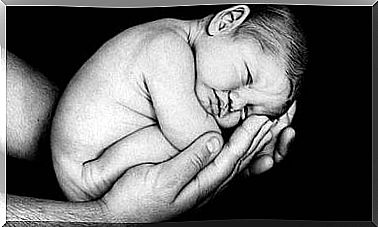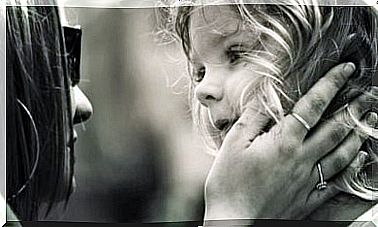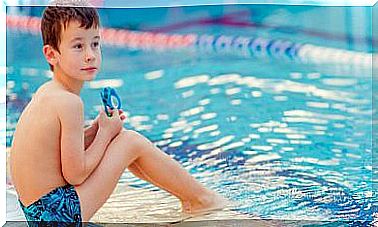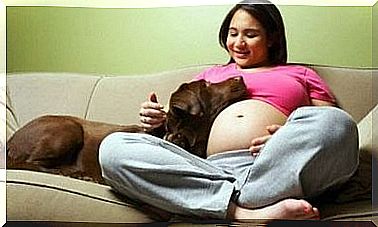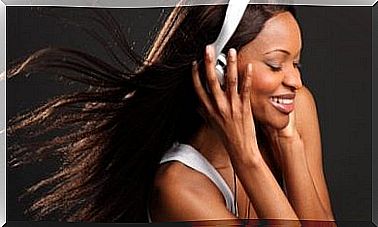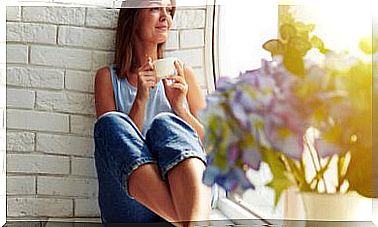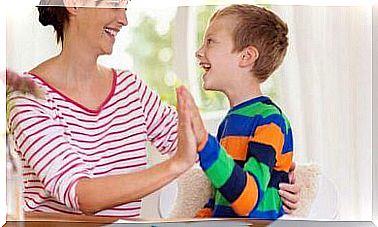Barefoot Children: What Are The Benefits?
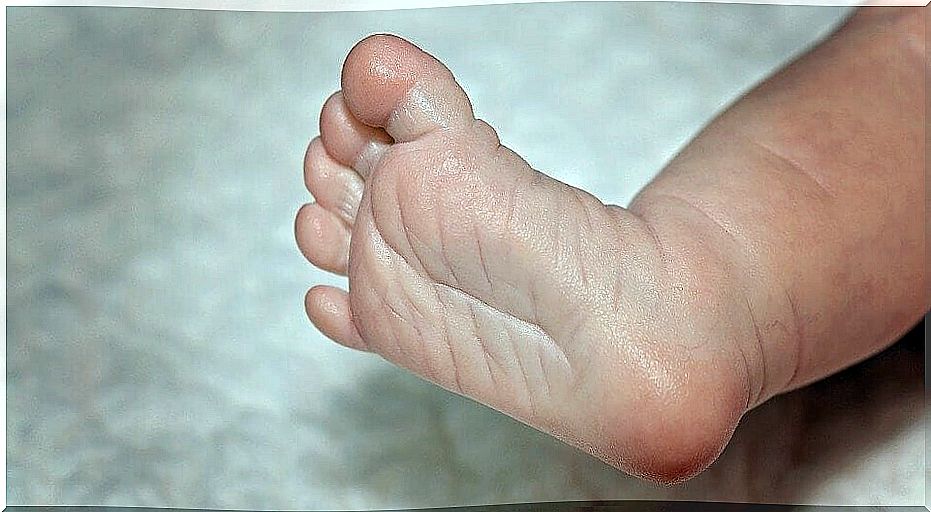
As soon as they are born, we put shoes and other types of shoes on the children to protect them from sharp objects, germs, dirt and any other external threat. While parents’ concerns are valid, it can be counterproductive to avoid at all costs having children spend time barefoot.
Parents often insist that children wear shoes all the time, mainly because they are unaware of the multiple benefits of going barefoot. When children don’t have shoes to go out, they have to stay at home, and so on, day after day.
Remember that, up to 8 or 9 months of age, babies have greater sensitivity in the soles of their feet than in the palms of their hands. Therefore, it is known that stroking the feet directly influences both tactile sensitivity and neurological development.
Why is it necessary to allow children to go barefoot?
It is necessary to allow children to go barefoot at specific times daily so that they can develop more safely in the environment.
And by that we’re not just referring to walking with good posture and maintaining balance, but also to the fact that establishing a direct connection to the ground creates even emotional security.
In other words, stepping on the ground with the sole of your foot can increase the feeling of familiarity and, with it, feeling confident in yourself.
1. Improves foot development
Children need to have time without shoes on a daily basis. Although we may not believe it, it helps the foot to develop physically without hindrance. In this sense, going barefoot helps to develop a neutral way of stepping (not too supined or too pronated).
Let’s remember that the pronators are the ones that walk with more force on the heel, while the supinators tend to exert more force on the forefoot, in such a way that they seem to walk on tiptoe from side to side.
And bearing in mind that the step influences everything, even dance, it is worth paying attention to this.
Walking barefoot encourages the grip of the toes and the proper development of the bones and ligaments of the foot. The longer the child takes to wear shoes, the more beneficial it will be for their growth.
2. Have a more direct contact with nature
When children are barefoot on the beach, they experience a sense of freedom that is very pleasant and even satisfying.
This is related to the need to have a complete sensory experience, as happened millions of years ago, when human beings walked barefoot and developed their senses to the fullest.
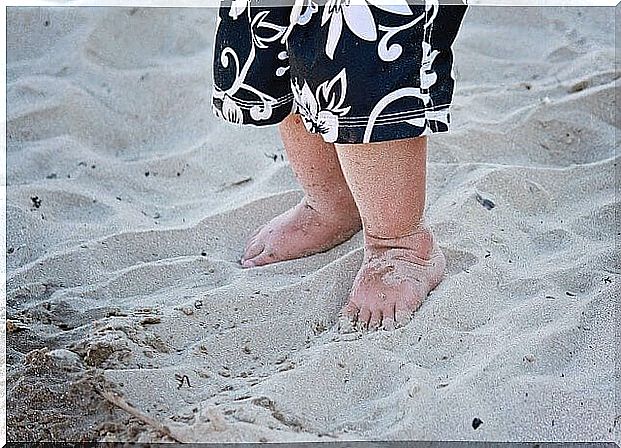
3. The nervous system is stimulated
On the other hand, when walking barefoot, children stimulate the nervous system and develop a sense of higher body awareness.
Due to the fact that the feet have multiple nerve endings and pressure points that transmit information to the body, being without shoes allows a child to know where their body is at the level of space and how to move through it.
4. Feet less prone to injury
When a child is barefoot, the feet, lower legs and ankles are strengthened, which makes them less likely to be injured.
In addition, the joints and muscles of the feet are also strengthened.
5. Improves your perception of space
Another benefit of a child being barefoot is that, in this way, he improves his perception of the environment and his relationship with it much more quickly.
She locates and identifies surrounding objects, and this also helps her to be more careful about possible threats.
When should babies wear shoes?
Although some parents usually put shoes on their children from an early age, it is best not to put them on, except with woolen shoes and socks, as their feet are in full growth and need to be free from any pressure.
On the other hand, children can wear shoes. But only at certain times or, as mothers say: ‘for the picture’.
Later, when the child starts to take his first steps, then he can wear shoes longer. Especially when going outdoors.
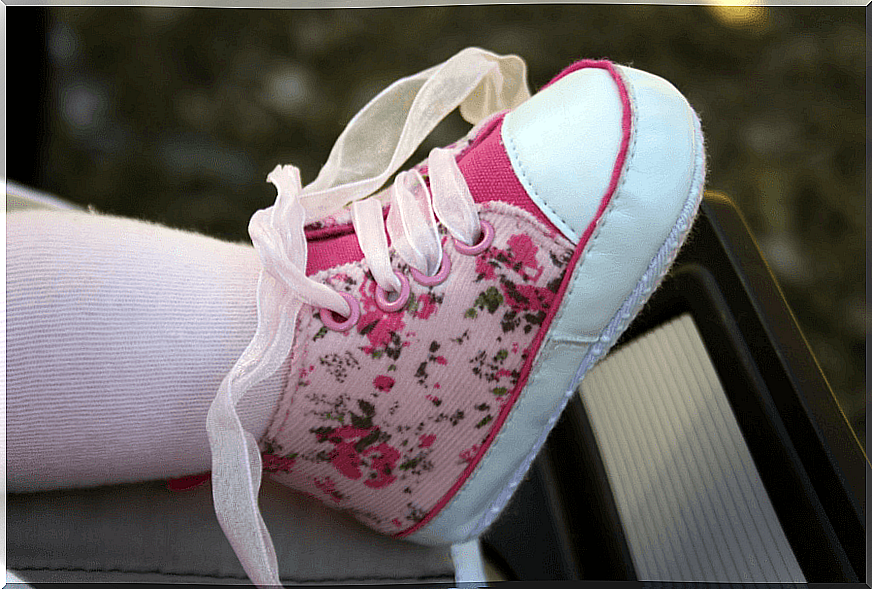
What should shoes look like from the first year of life on?
From 12-15 months onwards, when a child starts walking and needs to wear shoes, they should be suitable for their feet. If the child manifests being uncomfortable with the shoes used, other options should be tried until comfort is found.
Here are some characteristics that parents should consider when finding the right shoes:
- Footwear should protect and shelter the foot, but not imprison it or isolate it from external stimuli. This means that the child must control balance, movement and posture. In addition, the sole of the foot must have optimal contact with the ground.
- Footwear must be made of natural materials. This makes there a correct perspiration of the feet, Thus, we avoid possible allergies.
- The soles of shoes must be non-slip and flexible. The aim is for the child to be able to bend his foot when walking.
- The toe of the shoe should be rounded and wide. This will allow your fingers to move freely. But only between 5 and 15 millimeters remain between the end of the child’s longest toe and the shoe.
Walking barefoot is not something ‘dirty’ at all, but something natural and necessary for the good physical development of children.
Of course, there is no need to go to extremes: neither too much shoes nor too much time barefoot. Thus, it is necessary to know how to maintain a balance so that, in this way, there can be benefits.
